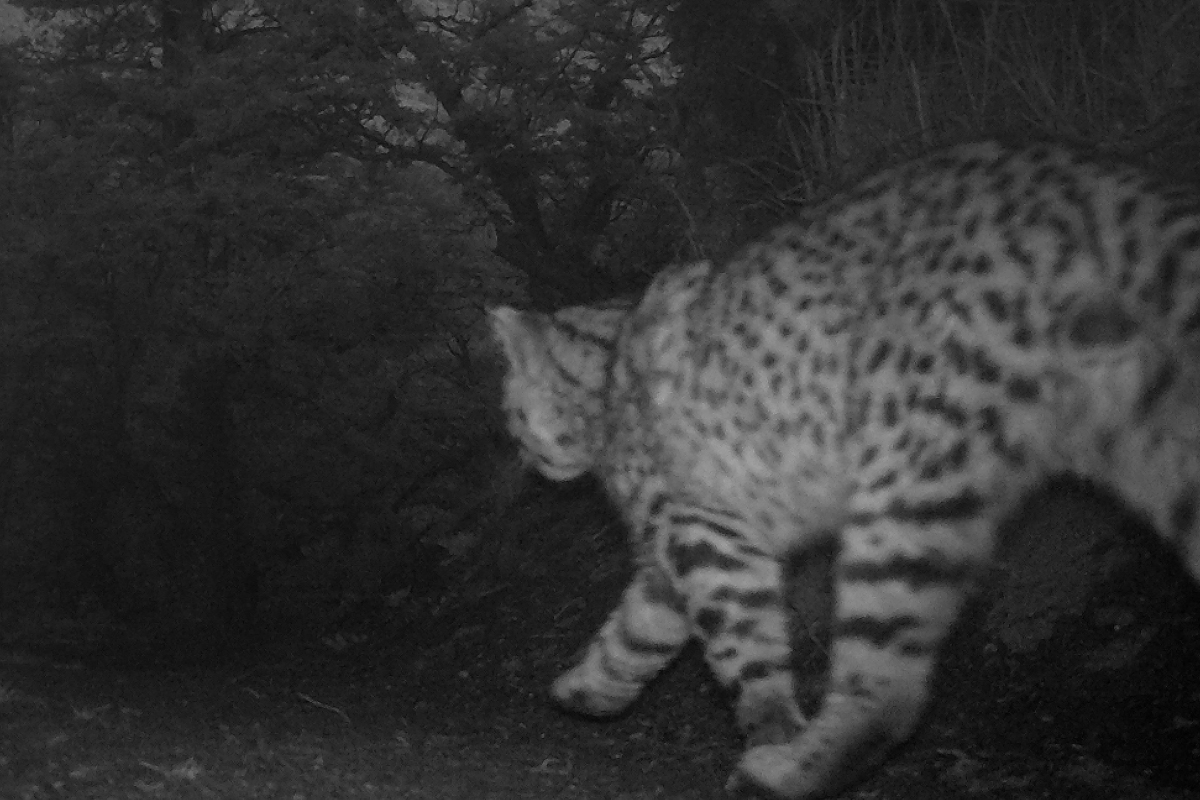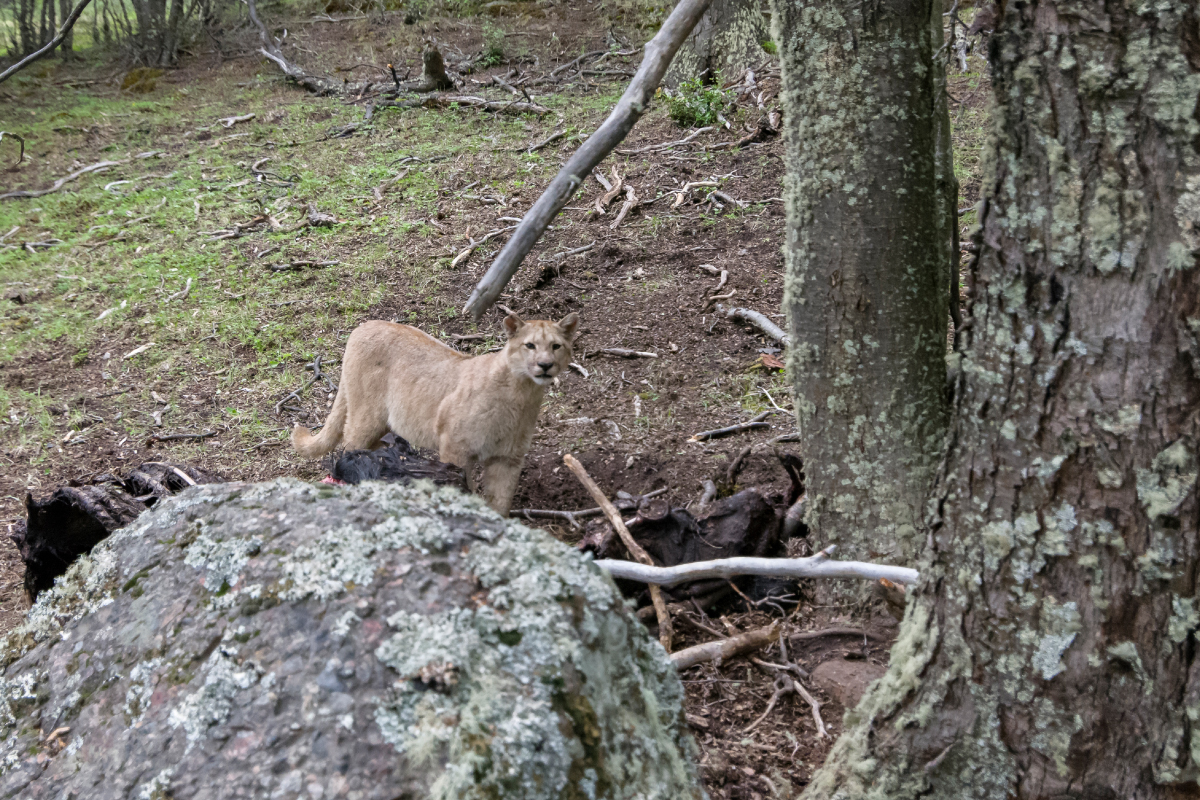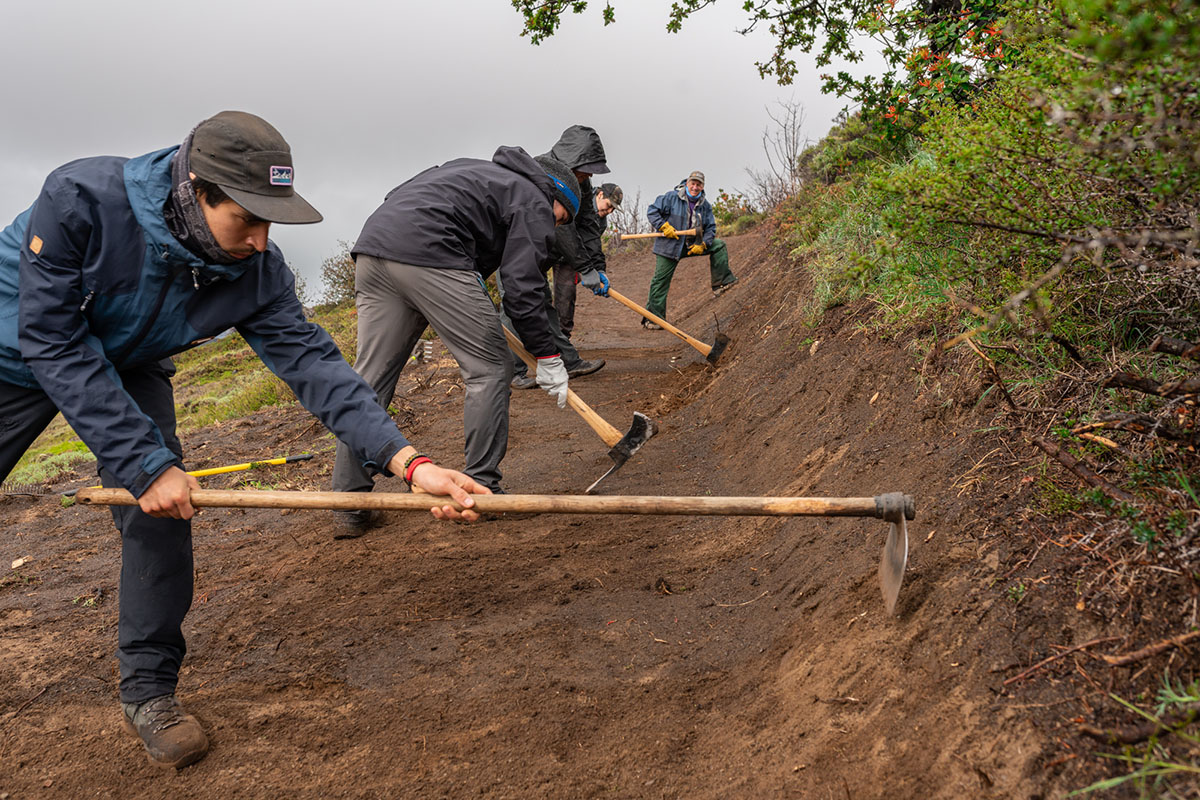A camera trap in Torres del Paine recorded a Geoffroy’s cat and two pumas walking in the middle of the night along one of the trekking paths currently under reconstruction at Las Torres Patagonia.
Once again, thanks to camera traps in strategic locations throughout the Torres del Paine National Park, it was possible to record one of the area’s most elusive felines in its natural state: Geoffroy’s cat. The sighting of this mammal comes along with the recording of two pumas, which, thanks to Las Torres Patagonia natural and cultural reserve’s applied technology, allows for advancement in the study of local fauna.
Geoffroy’s cat (Leopardus geoffroyi) is considered one of the four smallest wildcat species in the world, similar in size to a domestic feline, and is found in forests where it can climb and play among the branches.
The video also shows two pumas, which usually appear around Hotel Las Torres and go about their daily lives without interrupting guest activities.

The images were obtained by the cameras administered by environmental group AMA Torres del Paine park ranger, Héctor Parra, who leads the monitoring program funded by Las Torres Patagonia. The sighting coincides with the season of reconstruction and maintenance work on the footpath in Torres del Paine.
Every November through March since 2015, experts and volunteers from Chile and abroad participate in reconstruction work. Last year’s labors included the construction of nearly 4 kilometers (2.5 miles) of sustainable trails to Las Torres Base Viewpoint. This project will last another two years.
Trails are reconstructed using sustainable techniques based on local and renewable materials to minimize intervention and reduce the carbon footprint. In addition, these projects allow local communities to get involved, promoting cultural exchange and generating income for small tour operators.
Wear and tear to all the trails within the National Park, by rain, wind, cold, heat, foot traffic and other factors, call for different techniques to maintain their structure and ensure their integrity.

A cat that went from myth to fame at Las Torres Patagonia
Until 2019, sightings of Geoffroy’s cat were extremely rare and usually unclear in terms of describing the small feline. But that year, it was recorded for the first time with one of the camera traps installed by AMA Torres del Paine, in the context of the Las Torres Patagonia monitoring program.
Confirming its presence was a milestone, and it became a positive symbol for the friendly relationship between tourism and fauna, taking the feline from legend to reality.
Parra, the park ranger in charge of monitoring, explains that both Geoffroy’s cat and other species often visit this particular trail. “(There) they have a better view, and it’s a good place for them to hunt, so that’s why they use these corridors quite regularly,” explains Parra.

Benefits of trails for the natural environment
Monitoring of the trails in Reserva Las Torres Patagonia in 2023 revealed the presence of 13 animal species within the area. Of the subjects identified, 46 (75%) are native, while 15 (25%) are introduced, including 10 bird species and 3 mammals, belonging to 6 different families.
Josian Yaksic, Las Torres Patagonia’s CEO, explains that “the trails are the key to reaching all these wonders. Without them, there’s no Las Torres Base Viewpoint, there’s no Francés Valley. A large part of these spaces are managed by a public-private alliance, so collaborative work is essential to continue enjoying all these natural and tourist attractions.”
John Ojeda, Las Torres Patagonia’s Conservation, Sustainability and Safety Manager, affirms that the purposes of designing a new section for the busiest trail in Torres del Paine are to alleviate visitor congestion; to implement coherent planning for the area, which includes the conservation of biodiversity; to mitigate the environmental impact through gentler slopes; and, consequently, to reduce pressure on an area with particularly sensitive vegetation and soils, possibly with low recovery capacity.
Finally, AMA Torres del Paine’s Head of Research and Development, Nelson Bahamonde, comments that “for species as sensitive to human presence as Geoffroy’s cat, well-planned trails reduce habitat fragmentation, promote monitoring and environmental education, reduce disturbance, and promote healthy habitats for wildlife.”